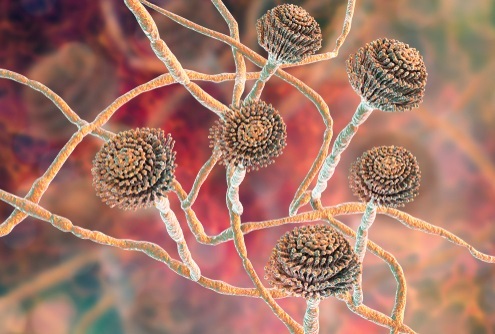
 Data Structure
Data Structure Networking
Networking RDBMS
RDBMS Operating System
Operating System Java
Java MS Excel
MS Excel iOS
iOS HTML
HTML CSS
CSS Android
Android Python
Python C Programming
C Programming C++
C++ C#
C# MongoDB
MongoDB MySQL
MySQL Javascript
Javascript PHP
PHP
- Selected Reading
- UPSC IAS Exams Notes
- Developer's Best Practices
- Questions and Answers
- Effective Resume Writing
- HR Interview Questions
- Computer Glossary
- Who is Who
Mycotoxins - An Overview
Introduction
Mycotoxins are toxic compounds produced by certain types of fungi that can grow on a variety of food and feed crops, as well as in the environment. These substances are a significant concern for human and animal health, as well as for food safety and security.
In this article, we will provide an overview of mycotoxins, including their sources, occurrence, effects on human and animal health, and methods for their detection and control.

Sources of Mycotoxins
Mycotoxins are produced by various species of fungi, including Aspergillus, Penicillium, Fusarium, and Alternaria, among others.
These fungi can grow on a wide range of crops, including grains, nuts, seeds, spices, and dried fruits, among others.
The growth of these fungi is influenced by various factors, including temperature, humidity, moisture content, and storage conditions. Additionally, certain environmental factors, such as drought and insect damage, can also increase the risk of fungal contamination and mycotoxin production.
Occurrence of Mycotoxins
Mycotoxins are found worldwide and can occur in various types of food and feed crops.
The most common mycotoxins include aflatoxins, ochratoxin A, fumonisins, deoxynivalenol, zearalenone, and patulin.
Aflatoxins are produced by Aspergillus flavus and Aspergillus parasiticus and are commonly found in crops such as peanuts, corn, and cottonseed. Ochratoxin A is produced by various Aspergillus and Penicillium species and is commonly found in cereals, coffee, and wine. Fumonisins are produced by Fusarium species and are commonly found in corn and corn products.
Deoxynivalenol and zearalenone are also produced by Fusarium species and are commonly found in wheat, barley, and corn. Patulin is produced by Penicillium species and is commonly found in apples and apple products.
Effects of Mycotoxins on Human and Animal Health
Mycotoxins can have a range of harmful effects on human and animal health, depending on the type and level of exposure. Aflatoxins, for example, are potent carcinogens and can cause liver cancer and other health problems in humans and animals.
Ochratoxin A has been linked to kidney disease and other health problems in humans, while fumonisins have been linked to esophageal cancer and other health problems in humans and animals. Deoxynivalenol and zearalenone can cause vomiting, diarrhea, and other health problems in animals, while patulin has been linked to gastrointestinal problems in humans.
Methods for Mycotoxin Detection and Control
Mycotoxin detection is critical for ensuring food safety and security. There are several methods for detecting mycotoxins in food and feed crops, including chromatography, immunoassays, and molecular methods.
These methods can detect mycotoxins at low levels and are essential for monitoring food and feed crops for mycotoxin contamination.
Mycotoxin control is also important for reducing the risk of mycotoxin exposure. This can be achieved through various methods, including good agricultural practices, proper storage and handling of crops, and the use of fungicides and other control measures.
Good agricultural practices, such as crop rotation and proper irrigation, can help reduce the risk of fungal contamination and mycotoxin production. Proper storage and handling of crops can also help prevent fungal growth and mycotoxin contamination.
Conclusion
Mycotoxin detection and control are essential for ensuring food safety and security. Various methods, including chromatography, immunoassays, and molecular methods, can be used to detect mycotoxins in food and feed crops. Additionally, good agricultural practices, proper storage and handling of crops, and the use of fungicides and other control measures can help reduce the risk of fungal contamination and mycotoxin production.
Overall, mycotoxins pose a significant threat to human and animal health, as well as to food safety and security. Understanding the sources, occurrences, effects, and methods for the detection and control of mycotoxins is essential for ensuring safe and healthy food and feed supplies.
FAQs
Q1. What are mycotoxins?
Ans. Mycotoxins are toxic compounds produced by certain types of fungi that can grow on a variety of food and feed crops, as well as in the environment.
Q2. How are mycotoxins harmful to human and animal health?
Ans. Mycotoxins can have a range of harmful effects on human and animal health, depending on the type and level of exposure. They can cause various health problems, including liver cancer, kidney disease, gastrointestinal problems, and other health issues.
Q3. What are the most common mycotoxins found in food and feed crops?
Ans. The most common mycotoxins include aflatoxins, ochratoxin A, fumonisins, deoxynivalenol, zearalenone, and patulin.
Q4. How are mycotoxins detected in food and feed crops?
Ans. Mycotoxin detection can be done through various methods, including chromatography, immunoassays, and molecular methods.
Q5. How can mycotoxin contamination be prevented?
Ans. Mycotoxin contamination can be prevented through good agricultural practices, proper storage and handling of crops, and the use of fungicides and other control measures.
Q6. Is there a safe level of mycotoxin exposure?
Ans. There is no safe level of mycotoxin exposure, as even low levels of exposure can have harmful effects on human and animal health. Therefore, it is important to monitor and control mycotoxin contamination in food and feed crops.

